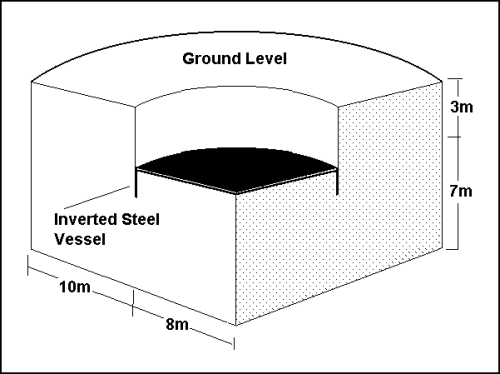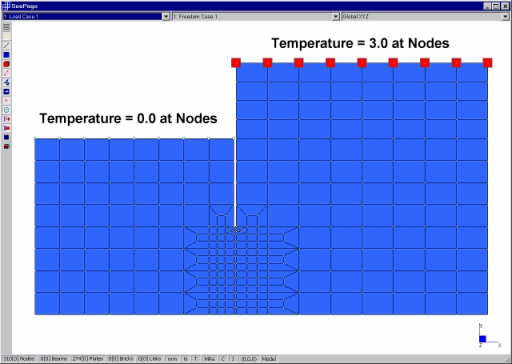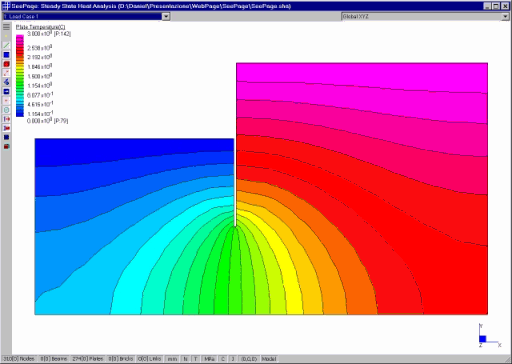기술자료 Strand7 Using Strand7 to model groundwater flow (seepage) problems
페이지 정보

본문
| Variable | Heat Conduction Problem | Seepage Problem |
| K | Thermal Conductivity | Permeability |
| f | Temperature at Nodes | Pressure Head at Nodes |
| Q | Internal Heat Generation | Flow due to a source or sink |
| To use the Strand7 Heat Solver for the analysis of seepage problems, we take the following steps: |
|
NOTE |
| For transient seepage problems, we simply run the Transient Heat Solver (either linear or nonlinear depending upon the material properties). |
EXAMPLE (Ref: "A Simple Guide to Finite Elements", Owen and Hinton) |
| The structure is an axisymmetric model of the groundwater flow beneath an inverted steel cylindrical vessel. There is no flow through the cylinder (only around it). |
The excavated level is 3.0m below the ground level and the ground has a permeability of 0.864 m/day. Therefore there is a pressure head of 3.0 at the ground level relative to the excavated level. |
The following is a representation of the physical situation: |
 |
The Strand7 finite element model below was constructed |
 |
The following is a contour of Pressure Head, given by displaying a contour of node Temperature. |
 |
첨부파일
-
Seepage.zip (31.8K)
0회 다운로드 | DATE : 2021-01-27 15:51:27
- 이전글High-Strength Steel Tower for Wind Turbine 21.01.27
- 다음글Modelling potential fluid flow in Strand7 21.01.27
댓글목록
등록된 댓글이 없습니다.
